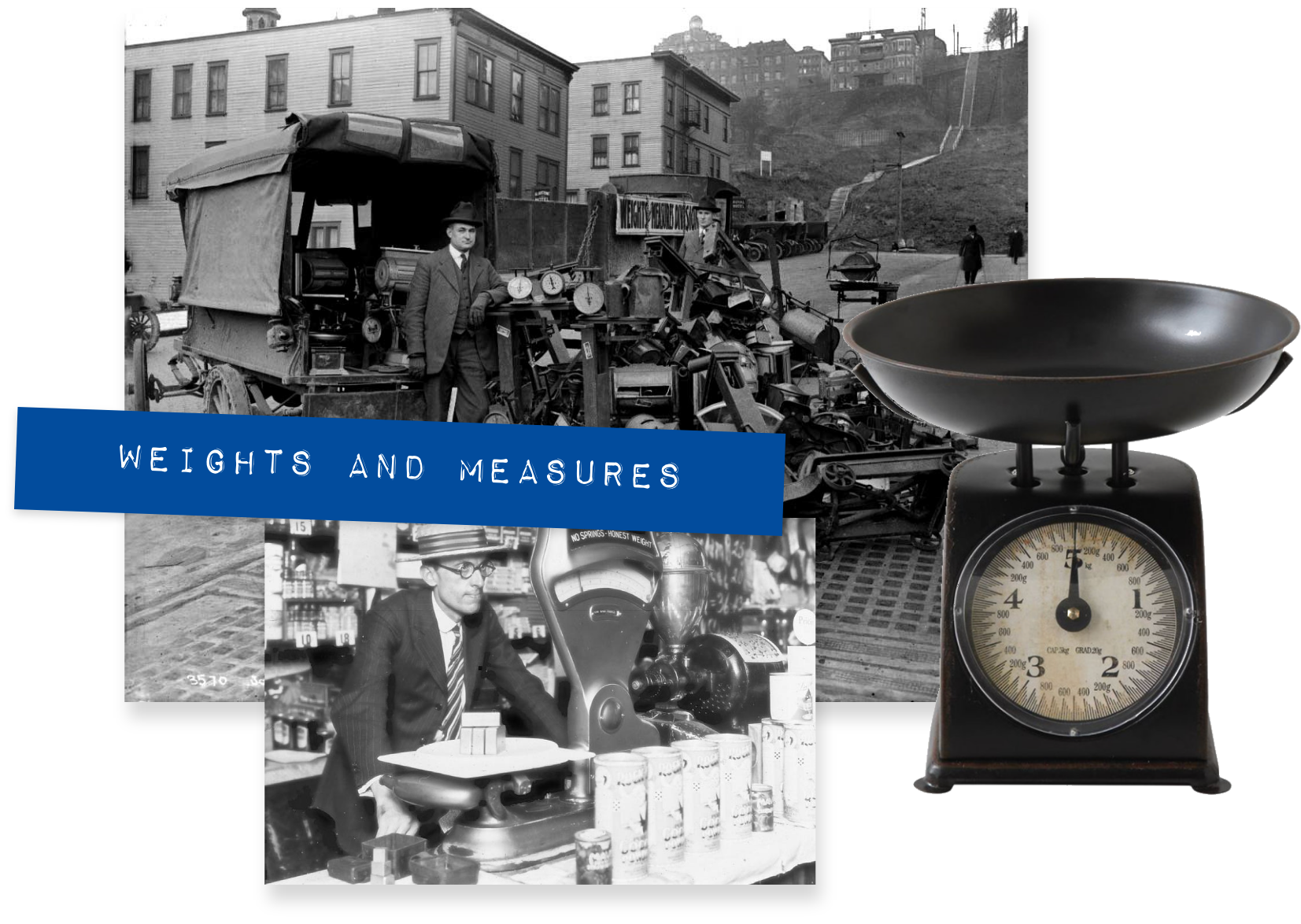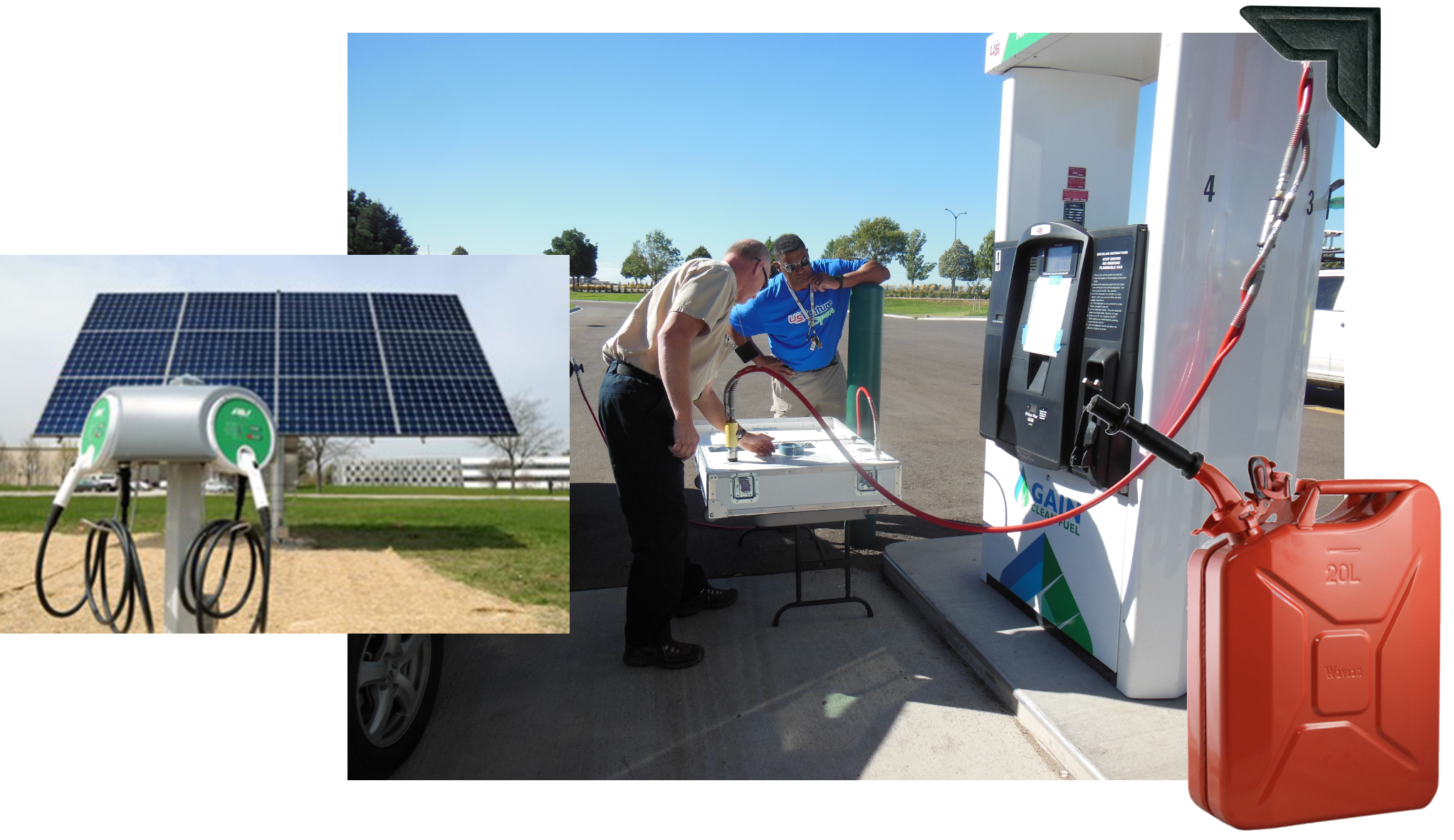States and Weights

Remember earlier when we said our agency was created in 1901? While that’s mostly true, it’s not the most precise thing we can say (and you know that precision is important to us). NIST’s history as a physical institution actually dates back to the 19th century. In 1824, the Treasury Department established an Office of Weights and Measures to create uniform standards.
That Office of Weights and Measures (OWM) still exists today, as the oldest part of NIST. OWM moved from the Treasury Department to the newly created agency in 1901. Then as now, its mission is for the public to “have confidence in measures that would be used in the commercial marketplace,” says NIST’s Doug Olson, who served as OWM chief from 2017 to 2021.
Traditionally, NIST has provided a set of physical objects, such as weights and scales, to each state, to provide uniform standards for quantities such as mass and volume. In 1965, Congress provided federal funding for the states to set up their own facilities for measurement science, or metrology, and hire their own staff.
As a result, “almost every state has a metrology laboratory,” Olson says.
NIST publishes a set of technical handbooks that specify standards — both documentary and measurement — for measuring everything from gallons of fuel to the net weight of packaged goods. The guidance in the handbooks is voluntary, but states can decide to incorporate it in their laws and regulations for commerce. This is the “legal metrology” we mentioned earlier.
Every year, the National Conference on Weights and Measures holds a major meeting bringing together state and local weights and measures officials, NIST and other federal agencies, as well as manufacturers, retailers and consumers. The participants provide input that shapes measurement standards for many areas of U.S. commerce, as well as legal metrology as a whole. The participants often discuss emerging issues in the field, such as the legal metrology aspects of cannabis. (Marijuana is the intoxicating version of the Cannabis plant, and hemp is the non-intoxicating form.)
“Each state has made their own decisions on what they're going to do with cannabis,” says NIST’s Katrice Lippa, the current OWM chief. “And if you really look at the specific rules for cannabis, each state really defines things quite differently.”
California has made cannabis legal for both medicinal and recreational purposes. The state “has a book of laws that's almost 47 pages long,” says NIST’s Steve Choquette, who directs the agency’s Office of Reference Materials. “Programs that are complying legally with the distribution and manufacturer of cannabis products have to measure all of these properties of the material.”
For example, the moisture content in the cannabis plant can affect the weight of the product that the consumer buys. Heat and storage can also affect some of the compounds in cannabis, including delta-9 THC, the main (psycho)active ingredient.
“And if it’s in the back of a truck and it's getting hot, the delta-9 THC might convert into other chemical forms. That could change the legal content of the product,” Lippa says.
“It turns out that cannabis is a remarkable plant in the sense of being able to bio-accumulate toxic metals. Who knew, right?” says Choquette. “It's good if you're trying to do bio-remediation, but not so good if you're smoking it,” he says.
“Independent testing laboratories will be tasked with testing cannabis not only for quality, but also for toxic metals or residual pesticides,” Choquette continues. “And we want them to be able to measure toxic metals accurately.” He and Lippa and others expect that cannabis measurements will be an active area of research at NIST for many years to come.
Even some of the more traditional weights and measures activities are poised for change. For decades, one of the most visible activities of state weights and measures offices has been around automobiles, or, more specifically, gas pumps.

“Gasoline is usually sold by volume,” Olson says. “There's a whole history of checking this measurement in the marketplace; it’s been going on for years.”
NIST’s handbooks provide detailed guidelines for ensuring that a gallon of gas that you buy is truly a gallon’s worth of fuel. It’s not just a faulty pump that can cause problems. For example, on a hot summer day, the heat can expand gasoline. Heated gasoline therefore means there will be less fuel in the gallon you buy. Gas stations need to put the fuel in storage tanks that have adequate insulation from the weather. NIST’s handbooks contain specifications for many technical details like this.
Looking forward, Olson envisions a major challenge for NIST’s role with automobiles when it comes to making measurements at charging stations for electric vehicles (EVs). More and more companies are installing EV charging stations, but they are using a variety of technologies, charging rates for electricity in different ways, and promising a wide range of charging times. It’s a Wild West situation, reminiscent of the early days of electricity in the turn of the 20th century.
For EV charging-station measurements to be fully trustworthy, state inspectors will have to carry out electrical measurements of charging stations that are as robust as today’s volume-based measurements of gasoline.
“There’s this whole infrastructure that is going to have to develop the way that infrastructure for gasoline delivery did in the early part of the 20th century,” Olson says.
How can consumers know they are getting the electricity they pay for on the charging stations?
“Certainly, it can be displayed very easily. It's going to be all digital, and the purchased quantity could be transferred right to your smartphone,” Olson says. “But you're getting amperage put into your battery. Are you getting as much as it said or not?” This could lead to problems, he says. With no way of checking, someone may figure out a way to cheat.
“There's going to need to be some way of inspecting and checking these charging stations in the field, and they will need to be traceable all the way back to NIST,” he says. So someday you may see a weights and measures inspector carrying electrical meters — and maybe NIST will help to develop the guidelines for measuring those EV stations accurately.
Ensuring fairness in the marketplace for fuel is one of many jobs for states weights and measures officials.
“The enforcement and regulation are done by the states. It's not done by the federal government,” Olson says. “When the states perform their regulation and inspection activities, the people going out into the field need to follow the proper procedures and have traceable measurements.”
That’s where NIST’s training programs come in. To support the national legal metrology system, NIST provides free training to state and local weights and measures officials who are able to participate. “But we cannot train all of the regulators and inspectors. There are just too many of them,” Olson says.
So NIST helps to “train the trainers,” Lippa says. “We train them, then they go and train, and everyone's getting the same level of training and that's really powerful,” she says. NIST aims to provide equitable levels of access to training for states big and small, near and far. “The goal for us is to make sure that all the states have the opportunity for the same level of metrological capacity,” she says.
“What has been a real challenge during COVID-19 is that most of this training for state metrologists used to be done in person,” Lippa says. However, the agency had to change its training program quickly. “What our staff has done is develop web-based training over the last year out of necessity,” she says. “But wow, it's really had an impact. Now we're reaching thousands of people where before it was hundreds per year. Basically we’re not only continuing the training but enhancing it.”
NIST works with its state counterparts in a very comprehensive fashion.
“The proper execution of legal metrology would not exist today in California without the continued support of the NIST Office of Weights and Measures,” says Kristin Macey, who directs the division of measurement standards at the California Department of Food and Agriculture. “California’s Department of Food and Agriculture and 58 county departments of weights and measures rely heavily on NIST’s uniform guidance, technical expertise, and training that is nationally and internationally recognized,” Macey says.

